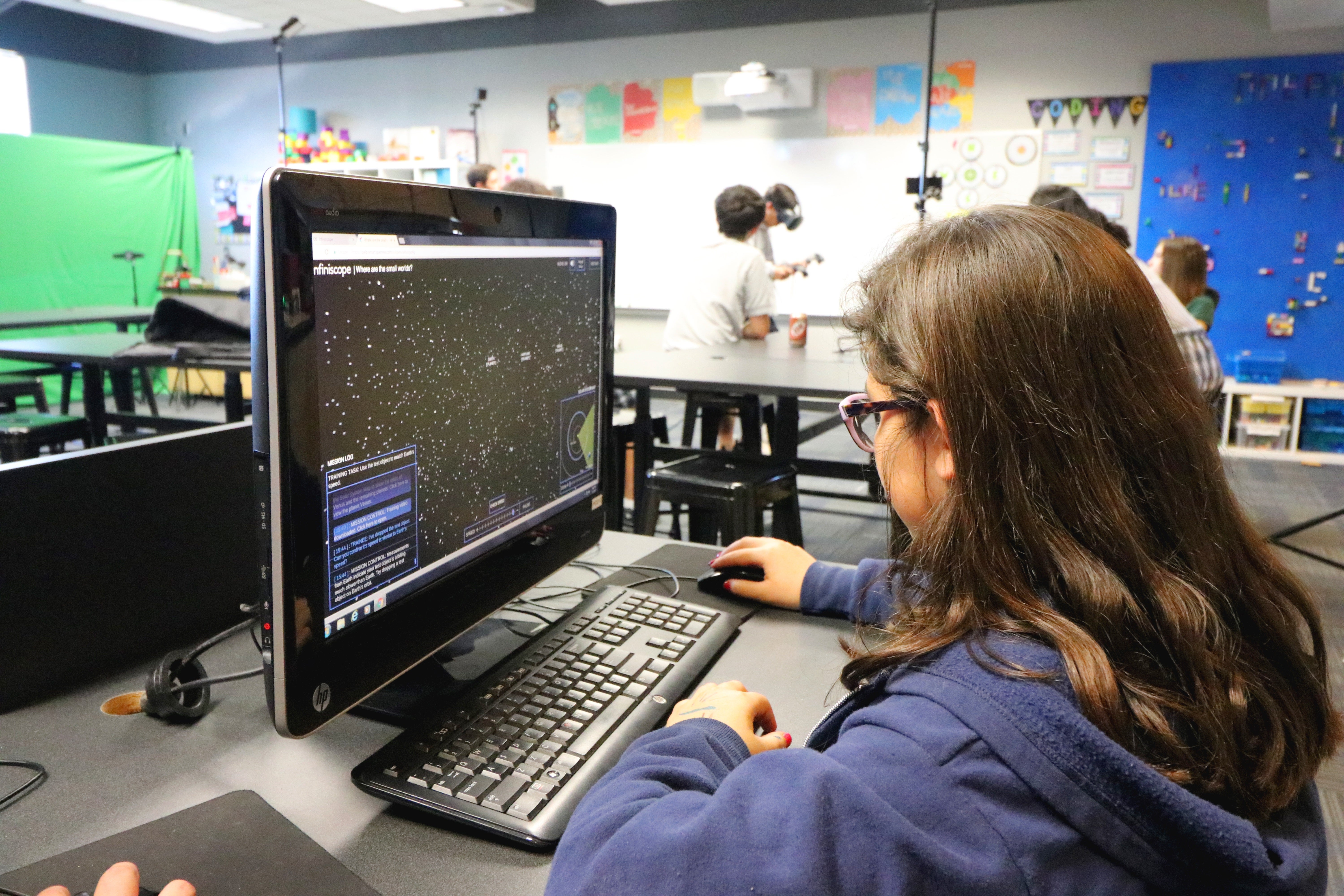Less than a year ago, Arizona State University received a $10.18 million grant from NASA’s Science Mission Directorate Education Community to develop next-generation digital learning experiences that incorporate NASA science content. The first component of this project, now titled “Infiniscope,” will be showcased at this week’s Lunar and Planetary Science Conference (LPSC) in Texas.
“Infiniscope provides a virtual space to connect users with cutting-edge space exploration experiences that inspire curiosity, excitement, engagement and confidence,” said Lindy Elkins-Tanton, director of ASU’s School of Earth and Space Exploration and Infiniscope principal investigator.
The first major Infiniscope activity, titled “Where are the small worlds?” will be featured throughout the week at LPSC. This interactive activity is a simulated exploration of the solar system in search of asteroids and other objects. Participants can use the online experience to collect data on small worlds, observe the motion of different worlds to determine their location in the solar system, and launch probes to discover “astrocaches” hidden throughout the solar system.
The key features of Infiniscope activities such as “Where are the small worlds?” are that they use both NASA data and subject-matter experts for adaptive learning. The activities provide not only feedback, but also pathways to meet the needs of individual learners.
“Infiniscope makes the vastness of space and space exploration inviting, accessible and interactive for educators and learners of all ages,” said deputy principal investigator Ariel Anbar. “It is the embodiment of education through exploration.”
Not just another internet portal, Infiniscope is part of the Inspark Science Network, a digital platform that empowers a global community of educators to collaborate, create, customize and share next-generation exploratory activities. The Inspark Science Network is a joint initiative of ASU’s Center for Education Through eXploration (ETX) and adaptive learning pioneer Smart Sparrow, to promote active learning and teaching science through exploration.
Middle-school student engaged in exploring the solar system in their classroom using the Infiniscope “Where are the small worlds?” activity.
The Network was launched in 2015, with support from the Bill & Melinda Gates Foundation, to create new digital courseware that incorporates online simulations, virtual field trips and adaptive learning analytics to help students who typically fail science courses succeed.
“The aim of Infiniscope is to help learners become problem-solvers capable of exploring the unknown, rather than just mastering what is already known,” said Anbar. “It is learning science as process and as a universe of questions rather than as a dusty collection of facts.”
The ASU team is also led by co-investigators Steven Semken and Sheri Klug Boonstra as well as ASU professor of practice and Smart Sparrow CEO Dror Ben-Naim. Other co-investigators include the School of Earth and Space Exploration's Erik Asphaug, Jim Bell, Philip Christensen, Scott Parazynski, Meenakshi Wadhwa, Sara Imari Walker, David Williams and Patrick Young.
Together with Smart Sparrow, this team will continue to develop personalized and adaptive learning experiences centered on astrobiology and “small bodies” such as asteroids and Saturn’s moon Enceladus. These are specific areas of expertise among the NASA subject-matter experts on the ASU team.
In the near term, the focus of Infiniscope is on independent self-learners of science. In the longer term, the team seeks to expand Infiniscope to formal and informal K–12 education.
NASA's Science Mission Directorate Education Community vision is to share the story, the science, and the adventure of NASA's scientific explorations of our home planet, the solar system and the universe beyond, through stimulating and informative activities and experiences created by experts, delivered effectively and efficiently to learners of many backgrounds via proven conduits, thus providing a direct return on the public's investment in NASA's scientific research.
Top photo: NASA’s New Horizon’s flyby image of Pluto, an example of one of the small worlds that can be searched for in the Infiniscope “Where are the small worlds” star field. Credit: NASA/Johns Hopkins University Applied Physics Laboratory/Southwest Research Institute
More Science and technology

ASU postdoctoral researcher leads initiative to support graduate student mental health
Olivia Davis had firsthand experience with anxiety and OCD before she entered grad school. Then, during the pandemic and as a result of the growing pressures of the graduate school environment, she…

ASU graduate student researching interplay between family dynamics, ADHD
The symptoms of attention deficit hyperactivity disorder (ADHD) — which include daydreaming, making careless mistakes or taking risks, having a hard time resisting temptation, difficulty getting…

Will this antibiotic work? ASU scientists develop rapid bacterial tests
Bacteria multiply at an astonishing rate, sometimes doubling in number in under four minutes. Imagine a doctor faced with a patient showing severe signs of infection. As they sift through test…

